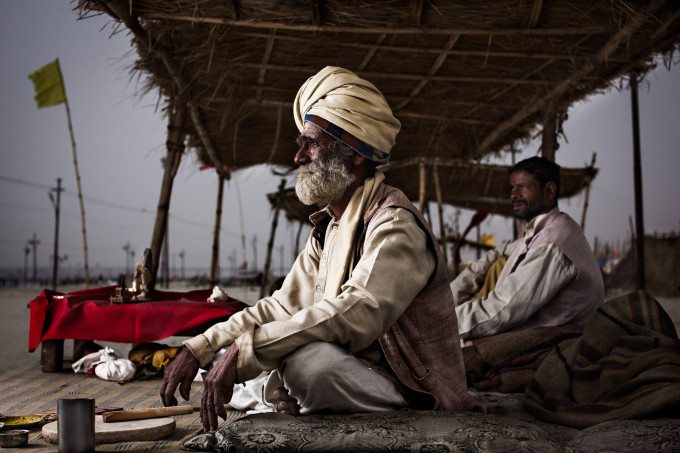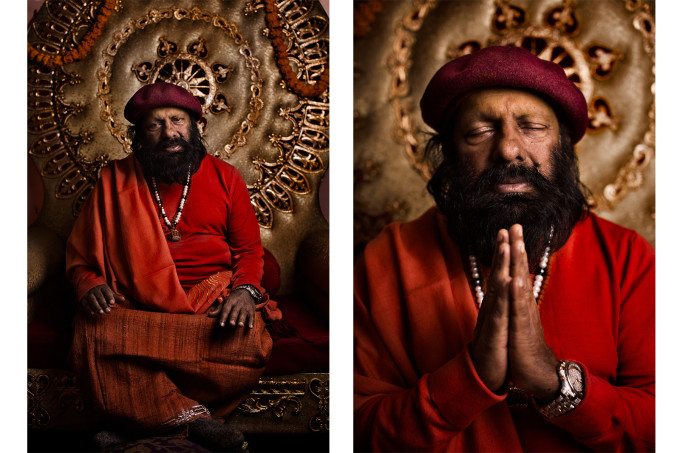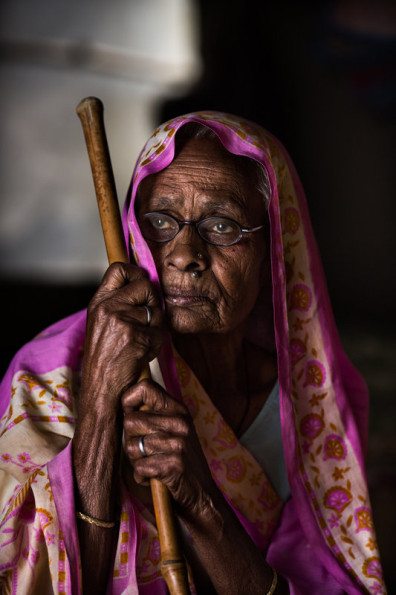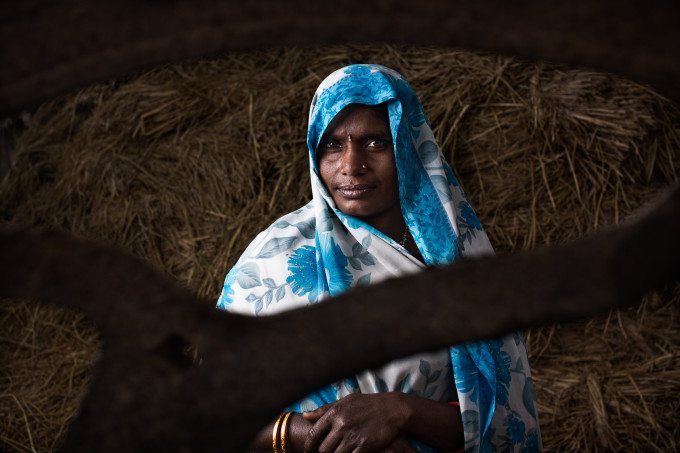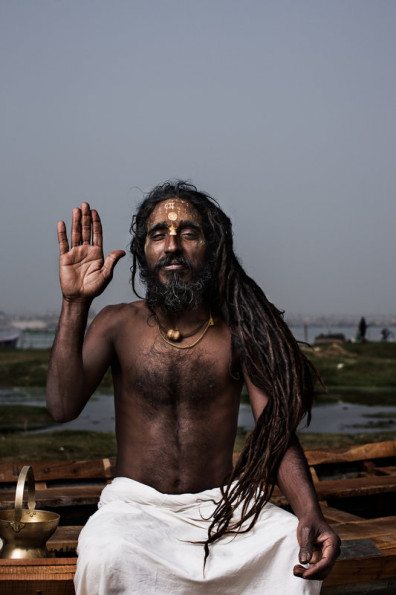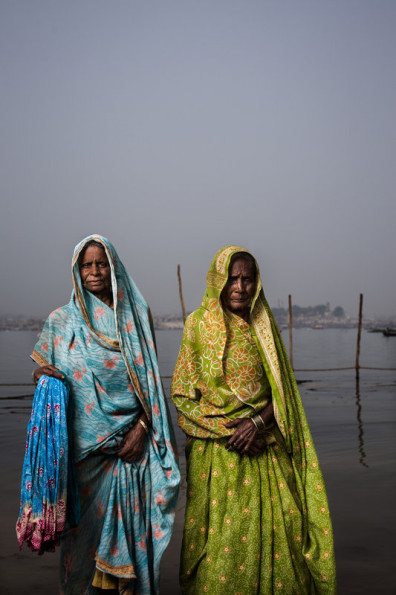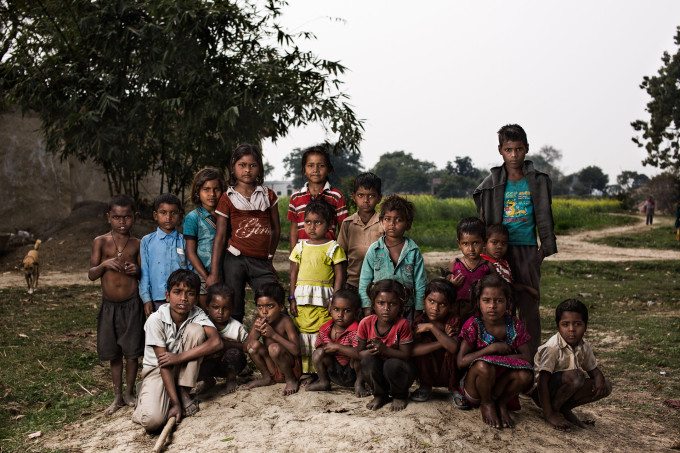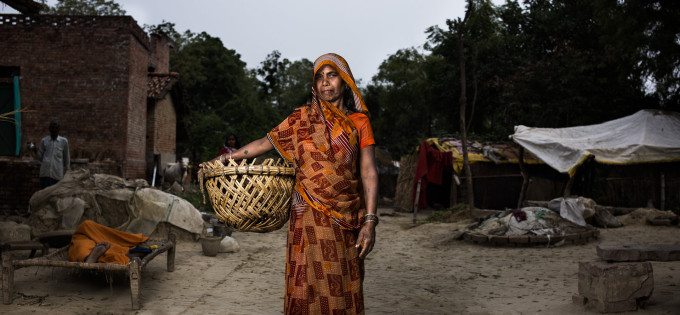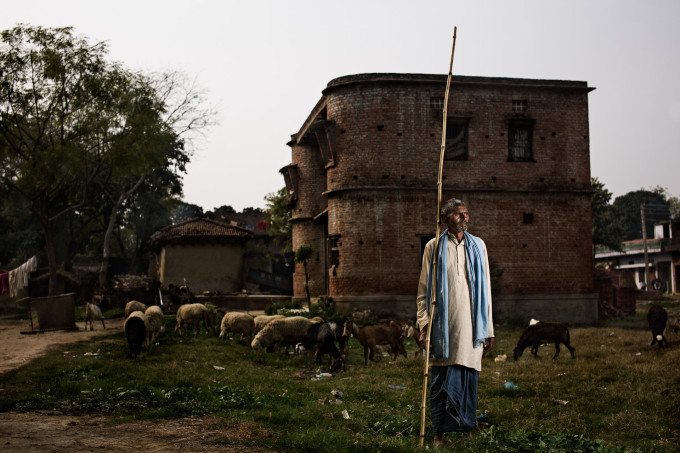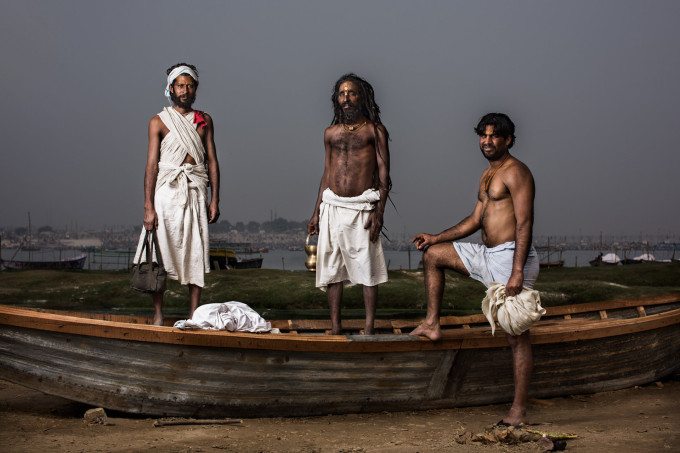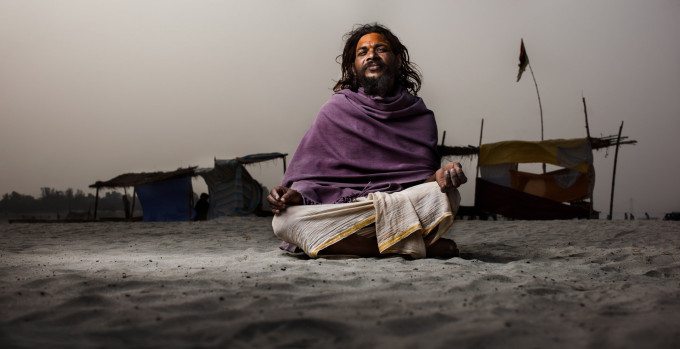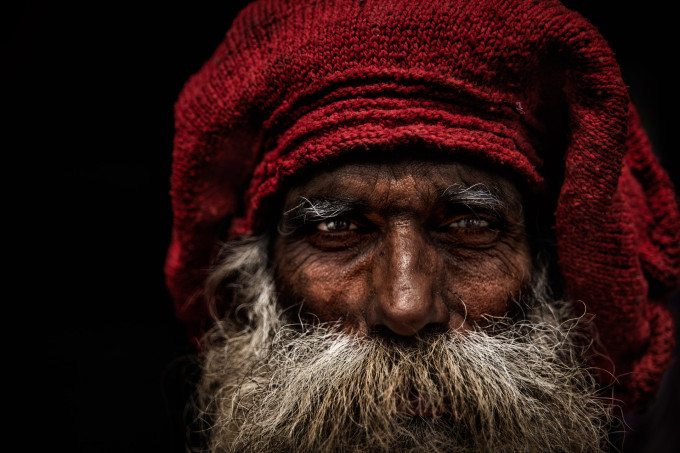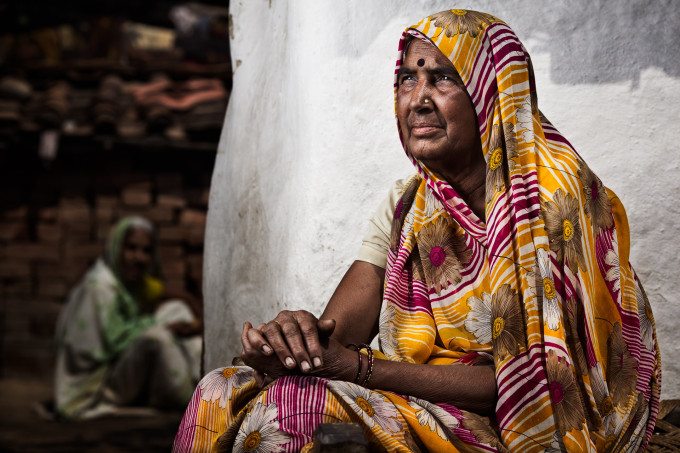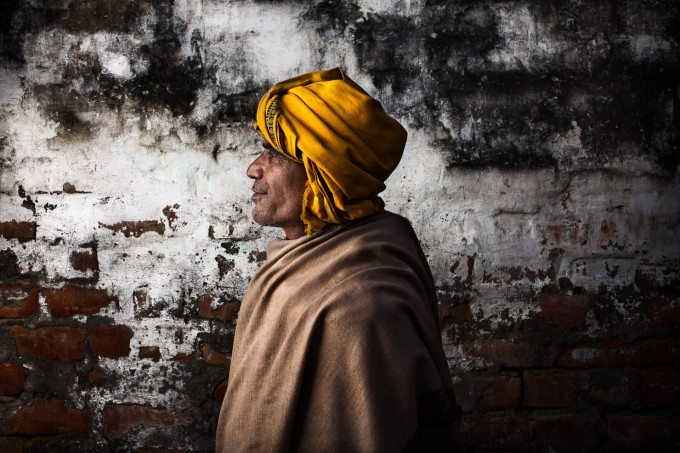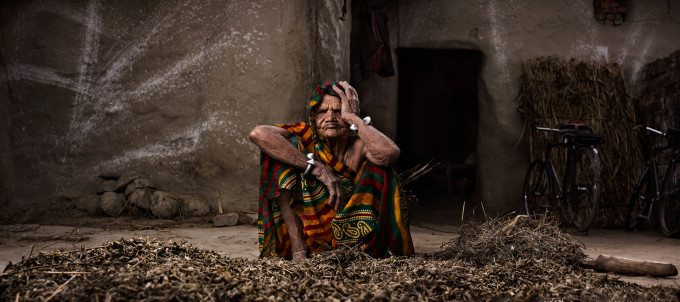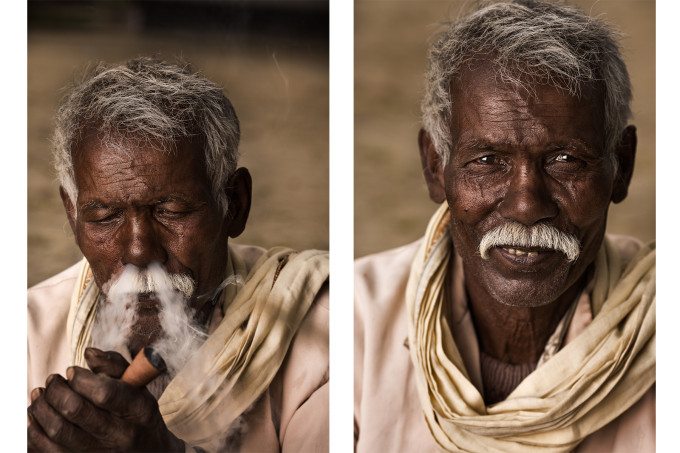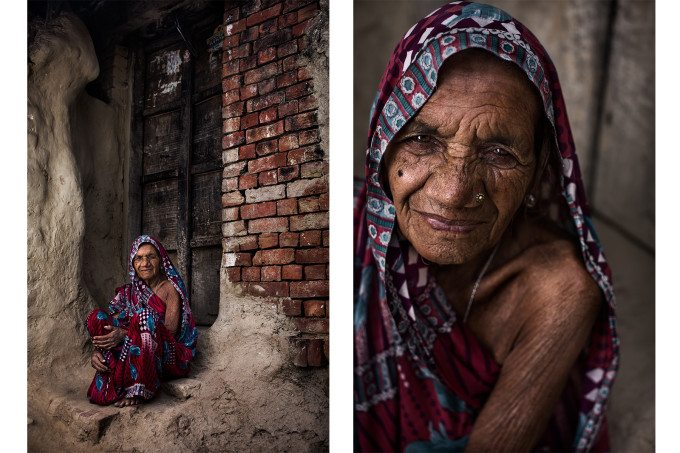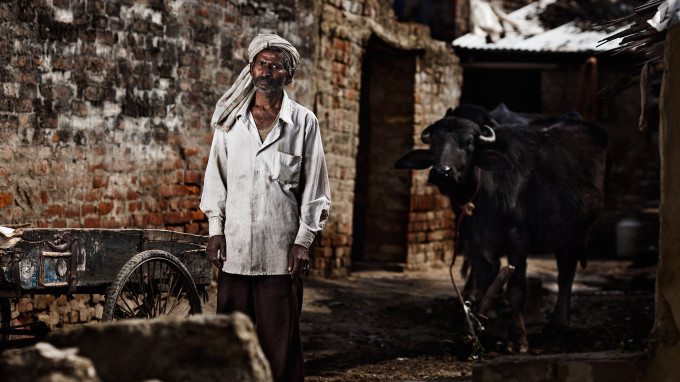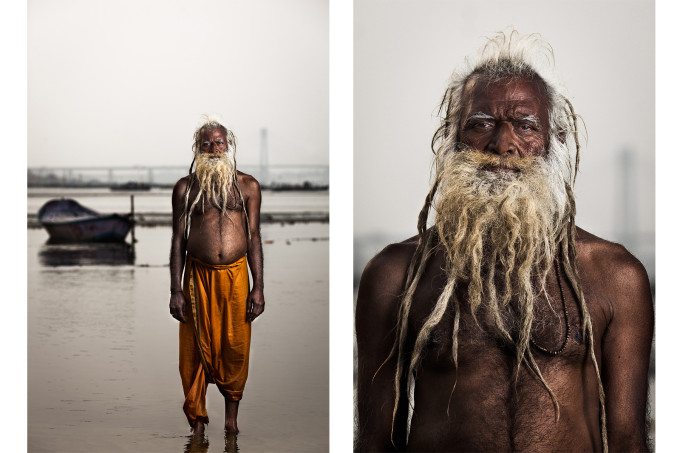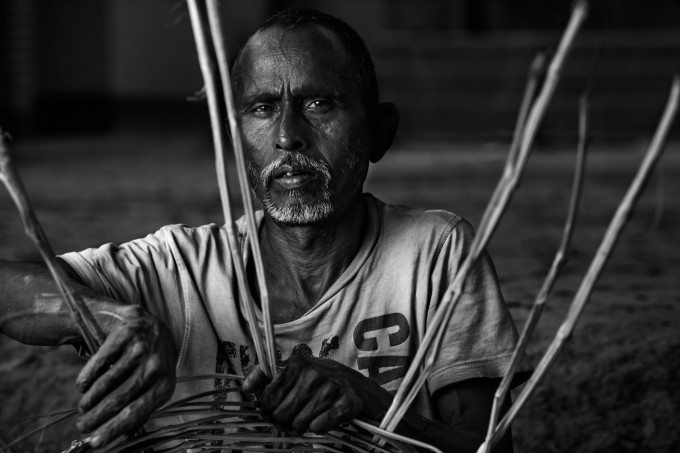All images by Travis Tank. Used with permission.
Most folks have trouble dedicating themselves to a photography project, but photographer Travis Tank’s story of going to India to capture portraits at the world’s largest spiritual gathering is quite incredible. The event happens every 12 years in India and is an extremely sacred one for many of the religious folks. Travis emphasizes bringing only the essentials to something like this, but as we all know, there is a lot more to creating a great photograph besides the gear.
We talked to Travis about the inspiration one gets from a new land and navigating the communication barrier.
Phoblographer: Lots of photographers travel to India to photograph the people there. But when you went, did you have a specific mission of some sort?
Travis: When I went to India, it was to attend the Kumbh Mela- the worlds largest spiritual gathering. It happens once every twelve years on the banks of the Ganges River in Allahabad. If you bathe in the water at this time you break the cycle of re-incarnation and your spirit can go to heaven. My friend Greg Davis and I went to document this event with photography and videography. I shot mostly video for that project and shot portraits of people on the side as well. Greg shot the photojournalistic images for the project. That video is called “Cloth, Paper, Dreams” and will debut in Feb.
Phoblographer: What made you choose the subjects that you did and light them specifically that way?
Travis: I choose my subjects based on a few things. First, I look for features in their face that will show character, mainly the eyes. You can see stories in peoples eyes and you can tell their life by their face. Secondly, I look for what someone might be holding or doing. A portrait is more than just a person, it is a story. If a lady is holding cloths on the banks of the river that are wet and her hands are dripping, you can tell she just washed them. This gives more of a narrative than just photographing her face. I usually light all of my subjects in a similar way, from 45 degrees on either side with the light slightly higher than my subject. Its a style I have come to like and is just personal preference.
Phoblographer: How did you approach your subjects and ask for their photographs?
Travis: When I go to a different country to photograph people I always bring someone who speaks the language and knows the culture. When I find someone I want to photography I ask my guide to approach them, I always go with but usually stay quiet and smile. In some cases you give them money, or buy something from them or for them. In many cases people are intrigued by what you are doing and who you are. You have to remember in most of these places they are on a very monotonous schedule. They do the same things day after day and you are something of excitement. Not many travelers come through to photograph in certain far off villages and they are just as interested in you as you are of them.
Phoblographer: Your images are incredibly detailed and show off the hard working life that these people have. When you posed your subjects, what were you trying to achieve or what story were you trying to tell?
Travis: I definitely pose my subjects in ways to tell their story. I am not a photojournalist, I am a visual artist. I have my guide ask the subject to turn their heads, look certain ways, move arms, ect. I put my subjects next to walls I find intriguing, trees that I find visually appealing or any location that I think will help the overall image.
Phoblographer: Tell us about the gear you used. A lot of these look like they were done with one light.
Travis: I am a Canon shooter, I use a 5D Mark III and prime lenses. I only use one light–a Profoto compact 1200 with either a 4ft square soft box or 5 ft octabank. To power the light I use a vagabond mini and pocket wizards to trigger the lights. I only ever bring one light on these trips but I always bring a backup bulb in case anything breaks.
Phoblographer: Did anyone not want their photos taken? How would you try to convince them otherwise if so?
Travis: Many people don’t want to be photographed and thats okay. I never push anyone who doesn’t want to be photographed into getting photographed. To get a good portrait you need the subject and photographer to be in unison. I like to make light hearted conversation, to make people feel comfortable. You can get authentic expressions if you yourself are authentic. Just because we can’t communicate through language we can still communicate and thats important to keep in mind. People can read your facial expression, your body language and tone of voice your talking to your guide in and they will react upon that. Remember everyone is watching you just as much as you are watching them.
Phoblographer: Lots of photographers are afraid to bring lighting gear and lots of expensive equipment into foreign countries. How did you feel travelling around with lots of gear?
Travis: The way I see if, if I am already spending the money to get plane tickets, places to stay, guides, food, and all the other expenses that go into a trip why not bring the gear needed to get the look your going for? I understand a lot of photographers are not into the lighting style but if you are then do it. Why waste the large amount of money on a trip to bring back photos your not 100% behind? Lights can be expensive, but so is my camera. Be smart in how you pack and you won’t break anything. Be smart in what you buy, don’t buy the heaviest power pack if your going to have to carry it around. Buy a less expensive lighter mono light instead. Bring only the essentials and be prepared to work hard. Carrying this gear around isn’t easy but what you get from that hard work is worth it.
Phoblographer: When you travel to a beautiful new place, photographers are often inspired by the land because it’s brand new material to work with. Upon viewing all of the locations, what was your thought process like since you’re a portrait shooter?
Travis: I am always inspired by the new landscapes I see. I see the beauty God created all around, I just choose to photograph the people in that landscape. I am not sure if my process would be any different than someone who shoots landscapes, or photojournalism, or any other type of photography. I think we all approach our subject (whatever that may be) the same way. We see something that visually inspires us and makes us want to share that with the world. I am a people person, and I love interacting with all humanity. I feel like I can spread happiness through my work. Showing someone their photo on the back of your camera when they have never seen themselves before is amazing. It brings light into their lives and that stays with me throughout mine. What I want to do with my portraits is show the similarity between us all. We are from different places, cultures and beliefs but we are all still human.
Please Support The Phoblographer
We love to bring you guys the latest and greatest news and gear related stuff. However, we can’t keep doing that unless we have your continued support. If you would like to purchase any of the items mentioned, please do so by clicking our links first and then purchasing the items as we then get a small portion of the sale to help run the website.
Also, please follow us on Facebook, Google+, Flickr and Twitter


